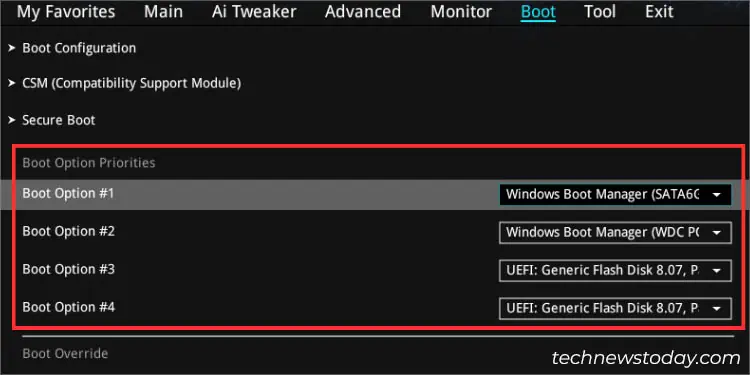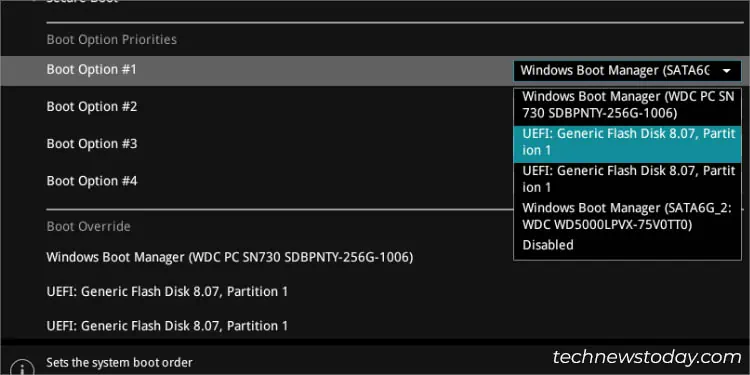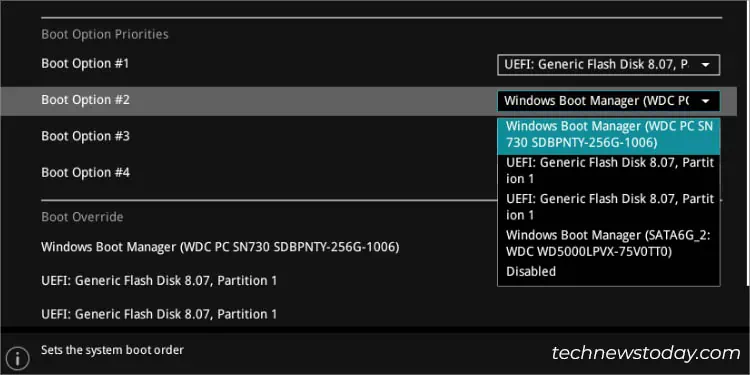While specifying boot priority is not required when using a single bootable device, it is essential for users who prefer multi-booting. Since your ASUS system selects the drive listed at the top of the boot order, you need to arrange them in a proper sequence.
To manage your bootable devices on ASUS BIOS, get toBoot Priorityin theEZ modeorBoot Option Prioritiesin theAdvanced mode. Now,drag and drop the drivesin desired positions or set them accordingly in therespective boot options.
For instance, I have installedUbuntuon my primary drive and Windows on the secondary. By default,Ubuntuis booted every time I start the PC but what I prefer isWindows.

Even though it’s possible to select the latter fromASUS Boot Menu, doing so every single time on startup can be quite tedious. Instead, keeping the secondary drive first in the boot priority list will be the best solution here.
Restart Your Computer to Access BIOS Interface
To access the Boot Order settings, you need to get toASUS Legacy/UEFI screenfirst. If you haven’t accessed the interface before, the process isn’t as daunting as you might think.
Start/restart your PC and as soon as you see the ASUS/ROG/TUF screen, press the Del or F2 key.
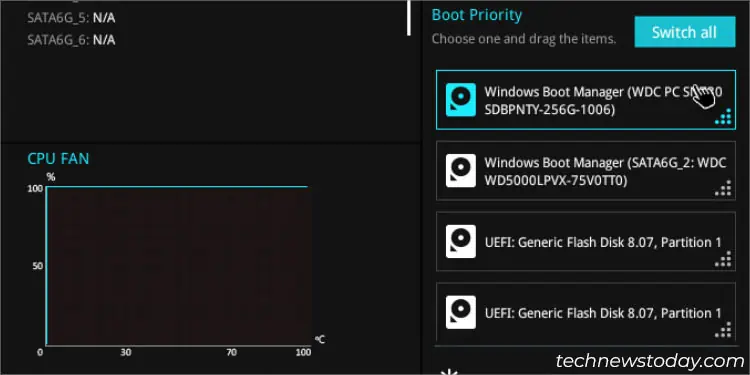
The first screen is usually accompanied by “Please press Del or F2 to enter UEFI BIOS setting” or a similar message. Note that if you are late in pressing the dedicated key, another logo screen appears with a ‘loading’ icon and you won’t be able to access the ASUS BIOS.
To avoid this from happening, I suggestspamming the BIOS keyas soon as your computer starts up. This even helps if theFast Boot feature is enabled.
Note:The steps in this guide are emphasized on ASUS UEFI Utility. While the exact process slightly differs on Legacy BIOS, the idea remains the same. You just have to navigate to the dedicated Boot section and change the priority in a similar way that I have demonstrated below.

Manage Boot Priority in EZ Mode
In most ASUS models, the default BIOS menu screen isEZ mode. It offers a simple user interface that is easy to follow along, especially for beginners.
In EZ mode, you may manage all the basic system settings, including the boot device priority. My basic instructions below should help just that:
Additional Tip:To quickly switch between EZ and Advanced modes in ASUS BIOS, use theF7key.
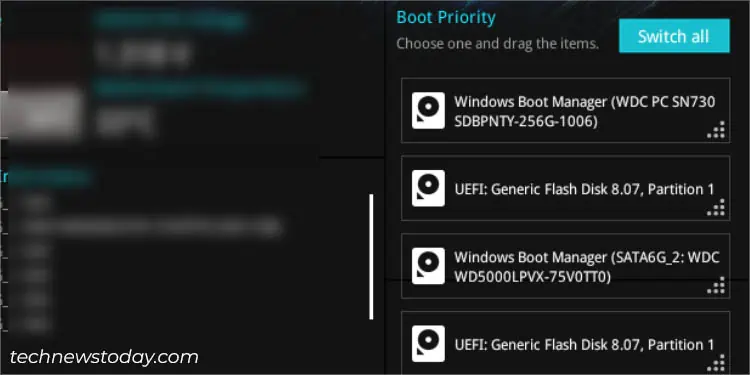
Change Boot Priority in Advanced Mode

